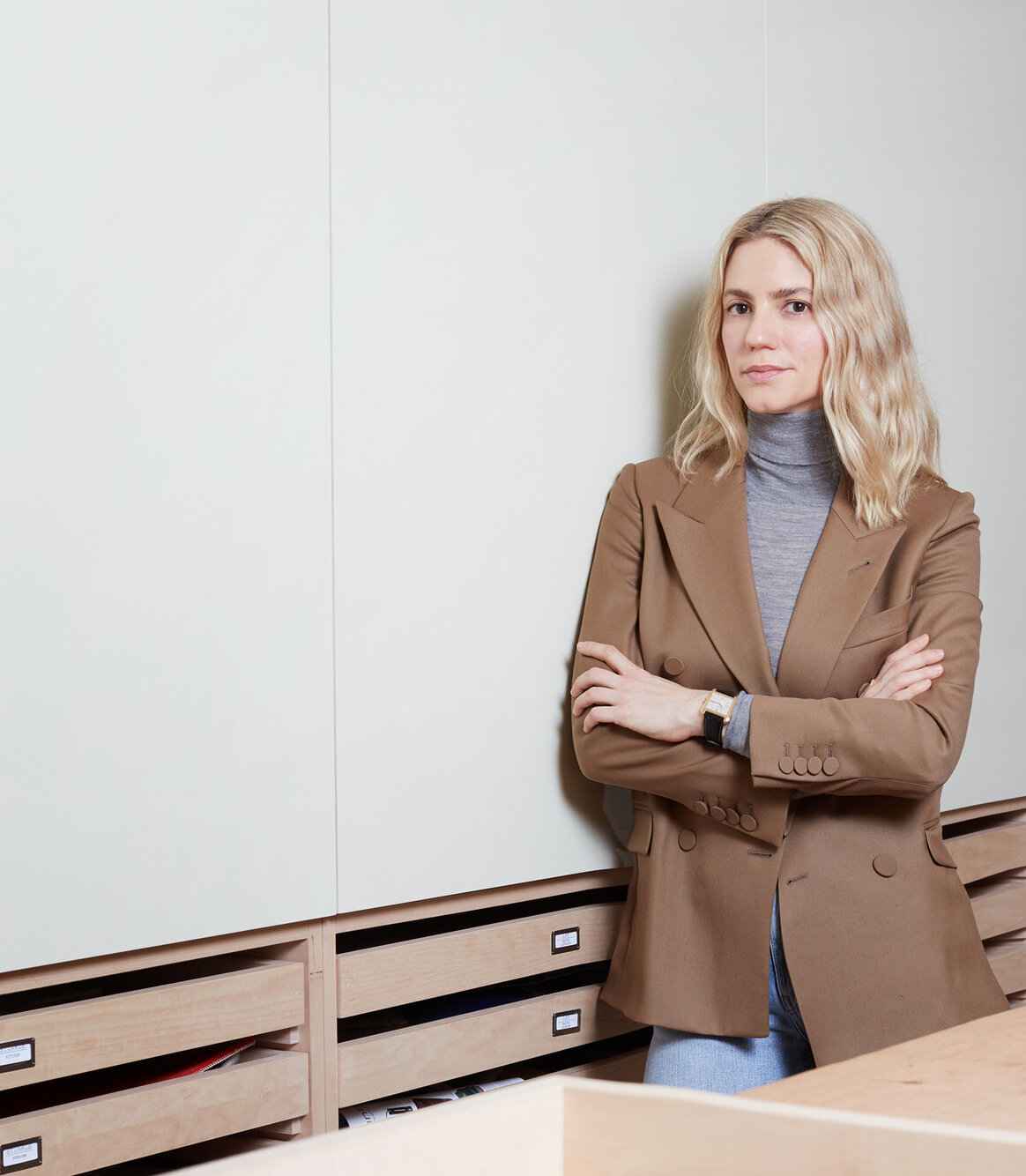
Interior designer Michelle R. Smith is, by profession, a chameleon. She’s adept at mixing styles and crafting expansive spaces where even the smallest details are meticulously curated. Her latest project is Nordic Knots‘s debut flatweave rug collaboration.
The Scandinavian textile maker’s co-founder Liza Laserow Berglund and Smith met over a decade ago in New York at a shared workspace, while Berglund was an interior designer and antiques dealer, and Smith was just establishing Studio MRS. Their new collaboration features four distinctive rugs—three flatweaves and one all-natural jute—each showcasing Smith’s signature breezy, neutrals-focused perspective in an array of natural fibers. One standout influence for the team was a vintage Esprit pocket square from the 1980s with a trompe l’œil pattern, now reflected underfoot.
In conversation with CULTURED, Smith reflects on finding rhythm in her practice alongside Berglund, building intuitive interiors, and the joy of translating manifold inspirations into a cohesive, thoughtful collection.
CULTURED: Describe your design ethos in three words.
Michelle R. Smith: Quiet. Thoughtful. Tailored.
CULTURED: Where does the story of this collection begin?
Smith: With a few vintage pocket squares. I wanted to design rugs that didn’t need to be the star of the room, but still had personality, like the way a patterned pocket square is an afterthought to a man’s suit. That’s what these are meant to do—subtle, flexible, layered pieces you can throw into almost any space without overthinking it.
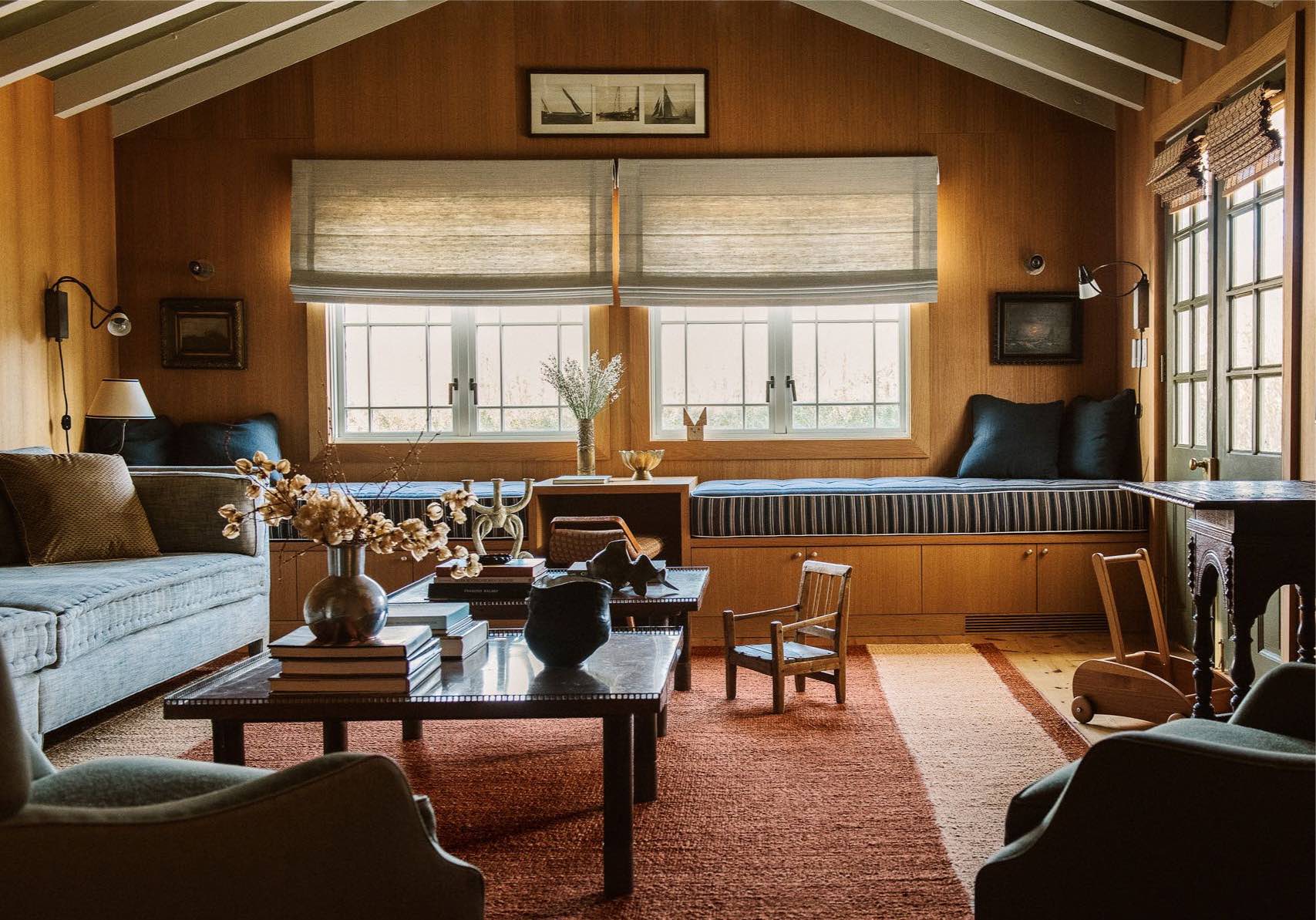
CULTURED: Describe your relationship with color. Did certain palettes inspire you?
Smith: I’m drawn to colors that aren’t trying too hard: sludge greens, dusty blues, khakis, browns. They function like neutrals, but they have a little bite to them. A lot of the palette came from fabrics we’ve used across client projects.
CULTURED: Which patterns did you find yourself gravitating toward?
Smith: I’m a sucker for small, repetitive patterns. I designed everything in AutoCAD because I’m pretty mathematical when it comes to design. That constraint actually opens things up creatively for me. There’s a clear reference to old-school men’s suiting—tiny motifs, simple repeats. Madeleine Castaing and Jacques Grange were both big influences, too. Their spaces often had these busy, small scale patterns wall-to-wall carpets that somehow felt pretty plain in the room.
CULTURED: You and Liza previously shared a workspace in New York. How does that kind of shared creative space inform your practice as a designer? What references do you adopt for working around creatives in other mediums?
Smith: Sharing a space with Liza at that point in our careers was so lucky! We were figuring it all out in real time together, and we could kind of fill in where the other lacked. I’d say it was a “fake it til we make it” vibe around the office those days. You don’t realize how fun those times are until they’re in hindsight.
CULTURED: What settings is this collection designed for? Where do these rugs belong?
Smith: They were designed with particular rooms in my house in Bellport in mind—but then I moved them around the house, and they still worked. Then, I tried them in a completely different project in Montauk, and they worked there too. That was the goal: they should behave like pocket squares. You can layer them into all kinds of spaces, and they adapt.
CULTURED: Why flatweave? How did you settle on the materials and style?
Smith: Flatweave just felt right. There’s a utility to it. It doesn’t scream for attention, and it doesn’t try to be precious. You can use these rugs in high-traffic areas, under a dining table, or layered over sisal.
CULTURED: Describe the elements on your moodboard. Can you highlight a few and speak to the influences that each is connected to?
Smith: One image is my favorite bowl, which has an unusual but exciting small-scale pattern at bottom. There are Polaroids of my kids and friends by the pool because the rugs should feel great in a family setting, with wet feet and dog paws. The color story came straight from our library of client fabrics—colors I’ve lived with, installed, and loved. It is kind of a lived-in collage.
CULTURED: What’s coming up next for you?
Smith: I’m back in New York after five years in New Orleans, settling into our house and spending more time in the studio. I’m currently working on a few historical projects that feel especially meaningful, and I’m excited to share them soon.

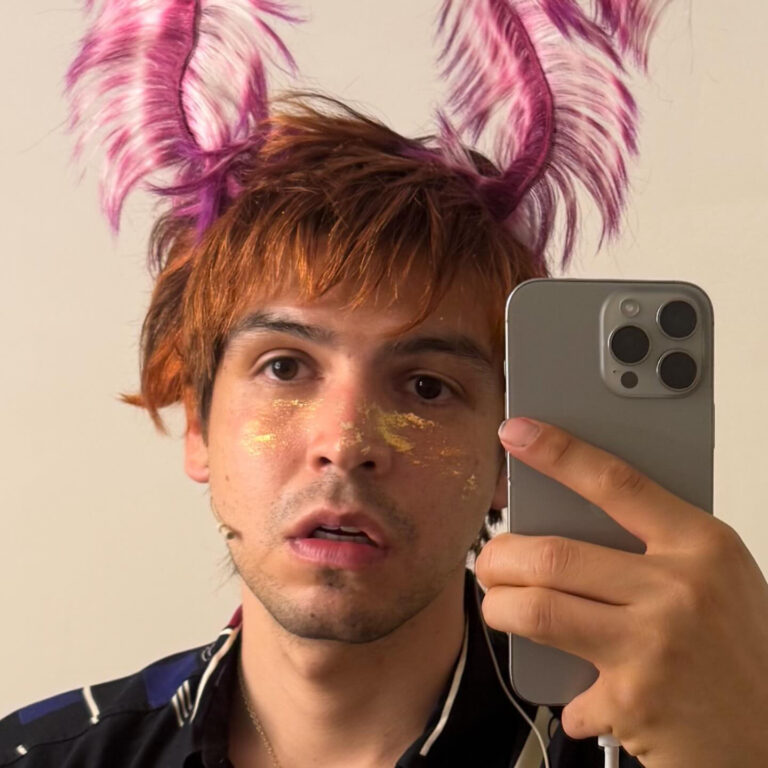
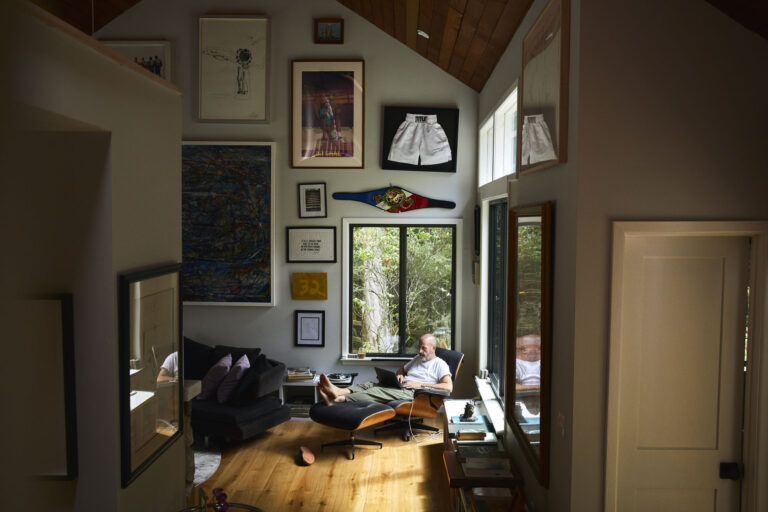
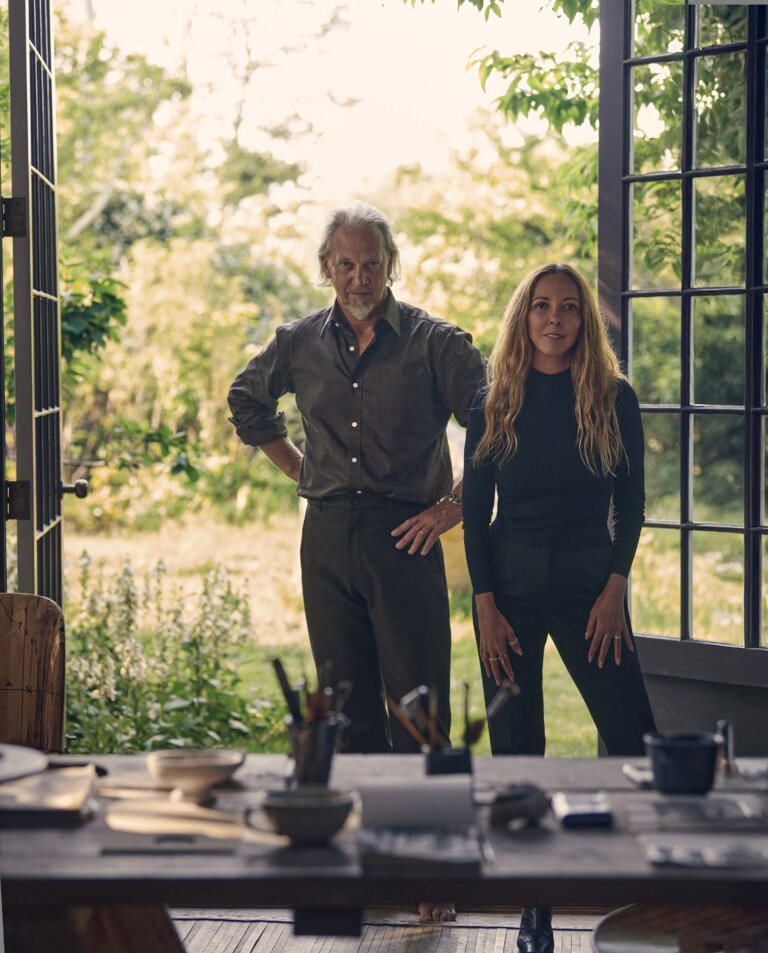

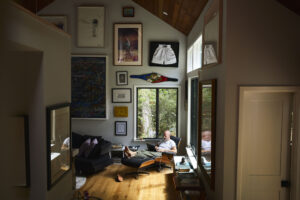
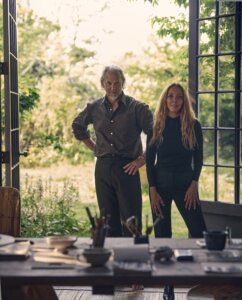



 in your life?
in your life?

